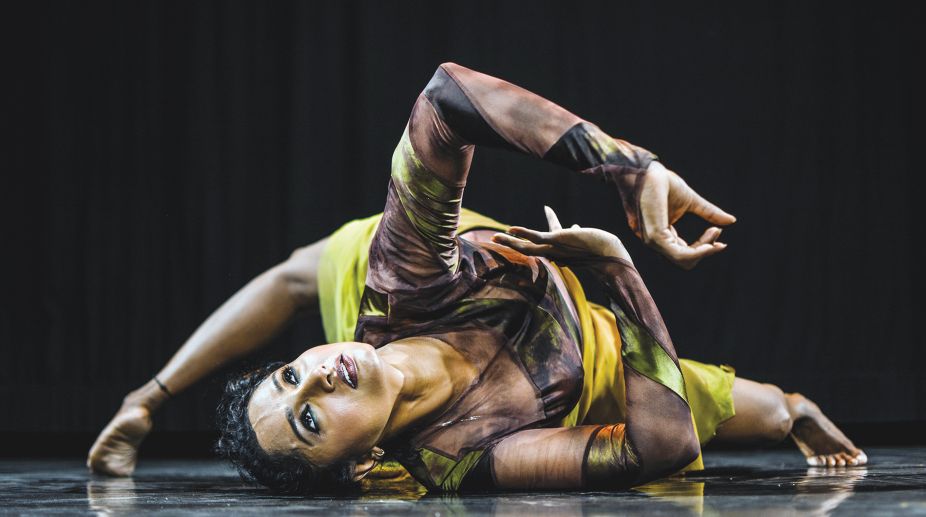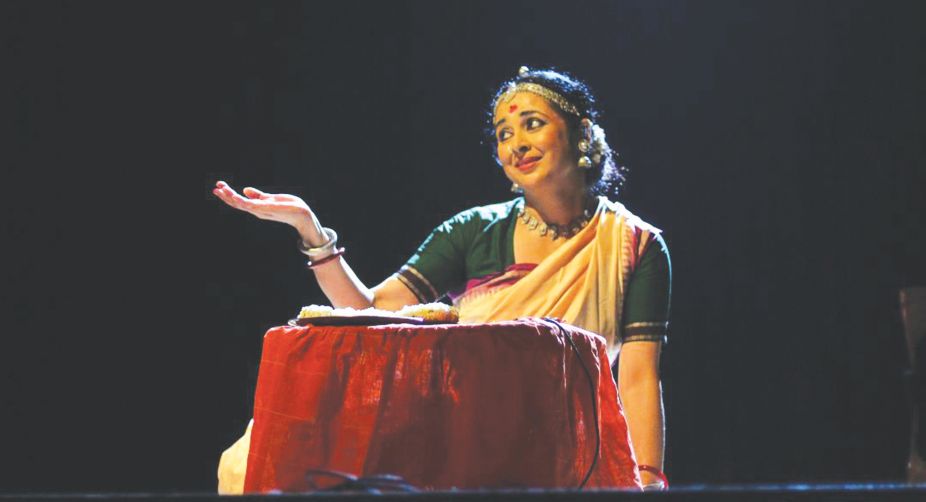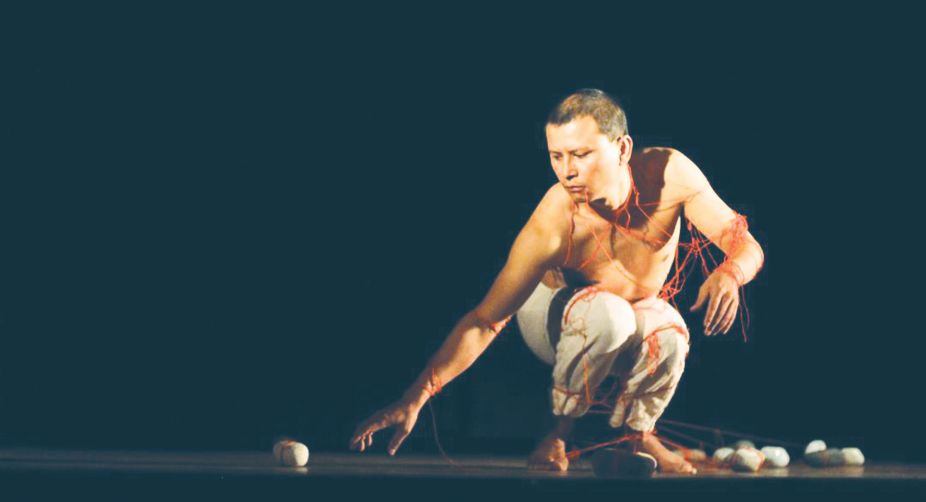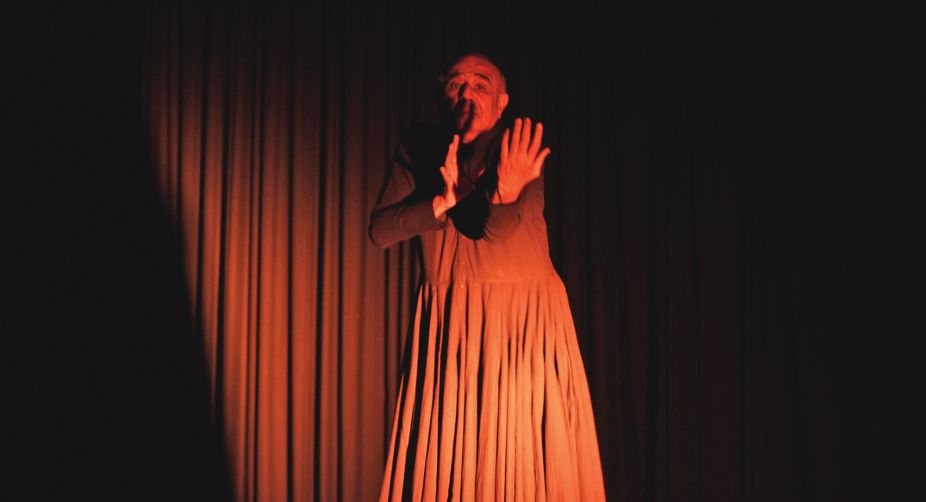Enjoy free bike ride to poll booths in 4 cities
Citizens of Kolkata, looking forward to exercising their franchise during the ongoing elections would be able to enjoy a faster conveyance to their polling booth, free-of-cost.
A two-day festival celebrating the silver jubilee of Kolkata-based Sapphire Creations Dance Company presented the diverse possibilities of Indian dance.

Hemabharathy Palani
Sapphire Creations Dance Company, Kolkata, commemorated their 25th year with a two-day conference at ICCR to talk about directions, possibilities and developments in Indian dance.
Sapphire Creations’ silver jubilee was a historic moment. Four generations of dancers, thinkers, writers and scholars came together to express their views, demonstrate and showcase the new paths they tread on. The event was organised in association with the ministry of culture and ICCR, Kolkata.
Samabhavana wove many strings of thought in a bunch. In this festival, celebrated with much fan fare, they sincerely tried to leave a lot for the next generation of dancers. The changes that have taken place in Indian dance in the last 10 years were discussed.
Advertisement
Sapphire Creations have been toiling hard to find their own genre of contemporary dance, which would be free of rigidity of any sort. They are on a constant search to look for unconventional expressions and draw freely from modern dance movements of the West and around the world.
Hemabharathy Palani of Bangalore performed Yasthti. Her attempt to connect the mind and body through free movement expressed versatility and improvisations, which is very much a 20th century phenomena.

Yashti was a project for the Bench — a funding programme set up by the 2 Faced Dance Company for women choreography globally. It was co-produced by Attakalari Centre for Movement Arts and supported by Scotland’s National Centre for Dance. Yashti was premiered in Bangalore.
There was fluidity and a lot of musicality in Hemabharathy’s dance movements. Trained in Kuchipudi under Sunanda Nair and Vyjayanthi Kasi and in Bharatanatyam by Minal Prabhu, she is a dynamic performer. In the production she tried her hand at depicting the multi-layered personality of a woman through anecdotes and delving deep into cultural memories of a lot of other women, who have chosen an alternative path.
She linked haunting human sentiments of love, jealousy, confrontation and redem-ption, displaying rich choreographing ideas. She combined a new vocabulary with her knowledge of traditional and contemporary dance, where in a single voice she told multiple truths. Taking inspiration from a Tulsi or basil plant she portrayed the self.
Odissi dancer Sharmila Biswas of Kolkata performed Evoking Radha, jointly conceptualised by Rituporno Ghosh and herself. Srijan Chatterjee’s music composition worked well with Biswas’ choreography.
In the role of an ordinary housewife — she was pleasingly transformed — her desires and aspirations on seeing a bunch of girls breezing past were expressed through Jaydeva’s Astapadi, Sakhi hey Kesi Madana Utharam.
There could be a plethora of creative inspirations based on this Astapadi depending on the imagination of the choreographer. Biswas made the housewife dwell in momentary fantasy, while living in her own world of mundane existence.
The creative performer had Radha Bhav (devotional love) in her grip. She had a lot of natya or theatrical elements thrown into her solo performance. Nritta, nritya and natya were intricately woven in Biswas’ choreographic work.

Surjit Nongmeikapam, Manipur performed TO. He was attracted to contemporary dance for its innovative and creative qualities. Surjit has studied choreography from the Natya Institute of Kathak and Choreography set up in Bangalore by Maya Rao.
He is the founder member of Nachom Arts of Contemporary Movements. In his performance at Satyajit Ray auditorium of ICCR, Surajit opened the proceedings. A number of stones with strings wound round them were left scattered on the stage.
Members of the audience, who wished to, took hold of a stone each, unwound the string and tied them to Surjit’s upper body, which would eventually take them on a journey to another world. Surjit carefully collected the stones with movements round his body and made an exit.
Bharatanatyam exponent and founder president of Natya-Vriksha Geeta Chandran of Delhi performed Unurth. In Unurth, Geeta probed into “what is opposite of beauty”. In her short piece she explored the negative qualities such as violence, unfair authority, poverty, want, fear and disgust in an abstract form through creative use of her learnt Bharatanatyam idiom.
Unurth tried to express the roots of traditional movements, which does not generally come to cognisance. She has delved into the darker corners of her dance, looked at processes, sounds and motion and has stripped Bharatanatyam of its “prettiness”. The soundtrack of the piece was created by Anish Pradhan and Shubha Mudgal in collaboration with electronic musician V/VM.

Astad Deboo from Mumbai performed Below the Edge. Deboo has learnt Kathak, Kathakali, contemporary dance of the Martha Graham genre, modern dance techniques, Jose Limon’s technique and knowledge of Narendra Sharma’s style, alongside his work experiences with several dancers like Pina Bausch and Alison Becker Chase. He gave physical expression of the inner workings of one who is on the verge of despair.
His performance impacted the reviewer in an uncommon way. Like a piece of poetry, which may be interpreted differently by different readers, this reviewer felt that Deboo put light on a rare subject of dance.
It left one thinking and also had something to do with acceptance of people who are different. He performed his piece with the body control he has developed over the years. Below the Edge was a rather heavy piece.
Advertisement